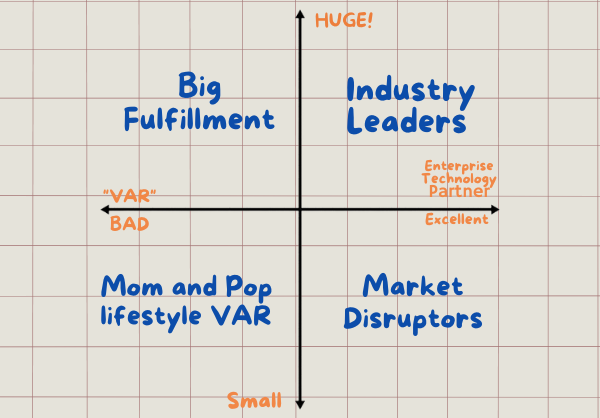In today’s fiercely competitive IT landscape, Value-Added Resellers (VARs) face a dual challenge: meeting the evolving needs of their clients while navigating intense market competition. At the heart of their strategy lies a pivotal element: partnerships. These collaborations aren’t just advantageous; they’re often the key to thriving in an ever-changing industry.
The Competitive Landscape: Statistics and Realities
The IT sector is marked by rapid technological advancements and cutthroat competition. According to recent studies, the global IT market is projected to reach $5 trillion by 2025, underscoring the immense opportunities and challenges VARs encounter. With such growth comes increased competition, with VARs vying not only against each other but also against larger, more established firms and emerging startups.
In this environment, differentiation becomes crucial. VARs must offer more than just products; they must deliver tailored solutions that add measurable value to their clients’ operations. This shift from mere product reselling to solution-centric offerings places a premium on partnerships that enhance capabilities and extend service offerings.
The Power of Partnerships
Partnerships in the VAR space go beyond simple vendor relationships; they are strategic alliances that augment expertise, broaden service portfolios, and amplify market reach. Here’s why they matter:
- Expanded Expertise: No VAR can be an expert in every technology or solution. Partnering with specialized firms allows VARs to tap into niche expertise, offering clients comprehensive solutions that address specific needs with precision.
- Enhanced Solution Capabilities: By integrating products and services from multiple vendors, VARs can create holistic solutions that deliver enhanced value to clients. This integrated approach not only differentiates them in the market but also fosters deeper client relationships.
- Access to Innovation: Technology evolves rapidly. Partnerships with innovative firms provide VARs with early access to cutting-edge solutions, keeping them ahead of the curve and enabling them to offer clients the latest advancements.
- Market Expansion: Collaborating with partners can open doors to new markets and customer segments, leveraging each other’s networks for mutual growth. This is particularly beneficial in expanding geographically or entering new industry verticals.
The Imperative of Creativity and Agility
According to industry reports, VARs that embrace agility are 2.5 times more likely to experience above-average revenue growth compared to their less agile counterparts. This statistic underscores the correlation between flexibility and sustained success in the dynamic IT ecosystem.
Conclusion
In essence, partnerships aren’t merely advantageous; they’re essential for VARs aiming to navigate the competitive IT terrain successfully. By leveraging the strengths of their partners and staying agile in their approach, VARs can chart a path to long-term prosperity and leadership in the industry.
Remember, in the VAR space, collaboration isn’t just a strategy; it’s the catalyst for innovation and growth.
Published by Chris Granger.



